Application of AV integration technology in art museum
Table of Contents
For art exhibition centers such as museums and galleries, audiovisual integration is unlike any other environment. Ultimately, the goal of audiovisual integration is to create a better experience for the audience by fusing the audio and visual effects of an art exhibit. In a gallery of artworks, an integrated audiovisual system can create an immersive digital experience like no other.
The integrated audio-visual system in the art exhibition hall attracts visitors and promotes their acquisition of knowledge through the use of virtual and augmented reality technology. In addition, interactive displays and advanced audio-visual integration ensure that information is accessible to all patrons.
Now, let’s take a look at which scenes and facilities in the art exhibition hall the audio-visual integrated system will improve the visitor’s visiting experience.
Digital Kiosks
Digital kiosks offer ample benefits to visitors to museums and art exhibitions. When touchscreen kiosks are strategically placed near exhibits, they create an engaging and interactive learning experience not possible with traditional signage. For example, digital kiosks can take visitors on an immersive journey and tell the story behind the artwork.
Additionally, digital kiosks increase accessibility for people from all walks of life as they are able to present information in many different languages as well as text and audio. Combined with the QR code functionality, visitors can also use their smartphones to obtain more information about the exhibition without having to purchase expensive printed guides.
Modern art galleries and museums understand the value that digital kiosks provide. Digital kiosks not only display information, but also bill and collect visitor details such as email list signups. They can also enhance attendance growth strategies by simplifying the process of gathering valuable market research data. Organizations can easily discover how long visitors spend viewing each exhibit and which exhibits they view next. When organizations have this information, they can use it to create improved displays in the future.
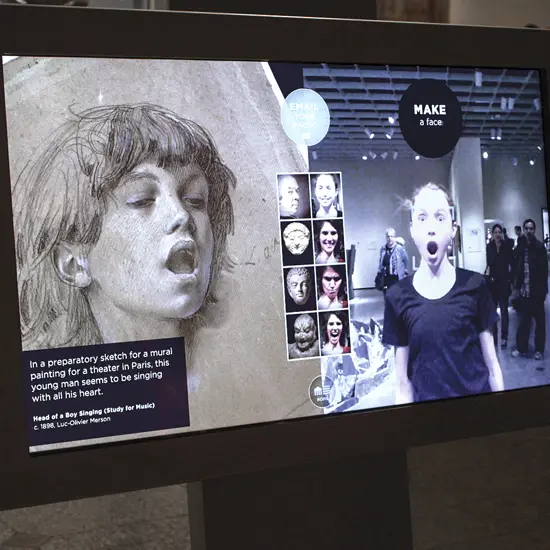
Improve the light perception of ambient lighting
While many organizations view lighting as a secondary consideration, for museums and galleries they are critical to creating the best possible experience for visitors. Poor lighting can detract from the appearance of an otherwise stunning exhibit. If the lighting is too low, visitors may not be able to see the artwork clearly. However, if the light is too bright, it can dilute the details of the exhibit and cast an unsightly glare on the masterpiece.
Often, a piece of art hanging on a wall will require a low wattage light, which encourages close scrutiny by visitors. In other cases, spotlights and ceiling-mounted accent lights are ideal for illuminating exhibits. It would be ideal if the position of the light was concentrated in the center of the artwork.
Regardless of how an audiovisual integrator chooses to display a piece, it is critical to avoid fluorescent lighting, which can damage the artwork. Ideally, the lighting should be about three times brighter than the room to attract visitors. Through thoughtful lighting design, a professional audiovisual integrator can help galleries enhance the tiniest detail of an exhibition.
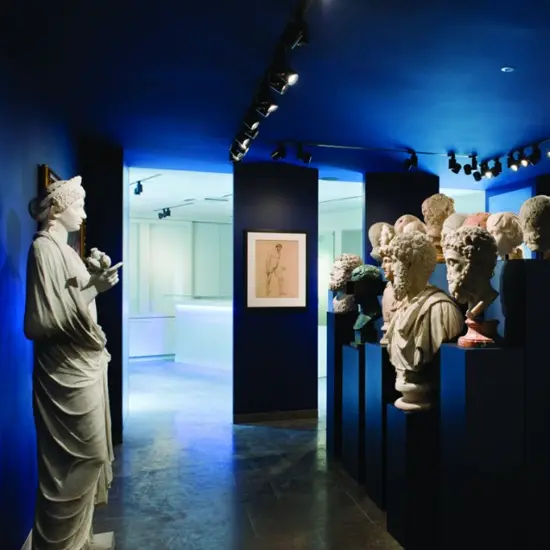
3D virtual simulation reality display technology
The increasing use of augmented reality has created many opportunities for engagement and education in museums or art exhibitions. Currently, the easiest way to use augmented reality is to add additional information about each exhibit, allowing visitors to use their smartphones to enrich their experience. Some museums and art galleries use augmented reality to place digital versions of historical figures or artists alongside exhibits. In this case, 3D characters can provide additional information or tell the story behind a piece of art. With augmented reality, museums and art galleries can bring exhibits to life through 3D displays.
Audiovisual integrators can also implement virtual reality technology to humanize historical events and create fully immersive artistic experiences. For example, visitors can view virtual versions of related artworks that are currently on loan elsewhere, or that the organization does not actually own. Additionally, virtual reality technology can be used to create fully immersive 3D tours or art exhibits for remote visitors.
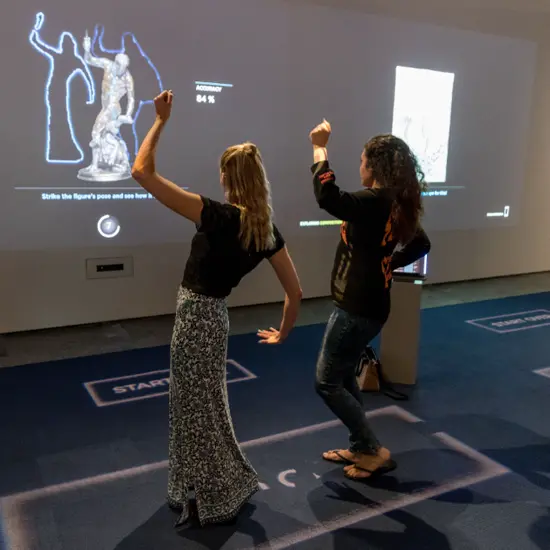
Interactive Smart Content Display
In museums or art exhibits, interactive displays often come in the form of video walls and interactive touchscreen displays. This technology can create an engaging experience for visitors. When visitors are in a particular exhibit, they can take a quiz about the information or play a game related to the content. Additionally, interactive displays allow visitors to use a searchable database to learn more about the topics that interest them most.
Interactive displays can also provide valuable wayfinding information in maps detailing building layouts. Interactive displays are highly customizable, so when your organization works with an experienced audiovisual integrator, each display can be tailored to your unique needs. When your displays need to be changed or updated, mobile device management software will allow your organization to quickly update the information.
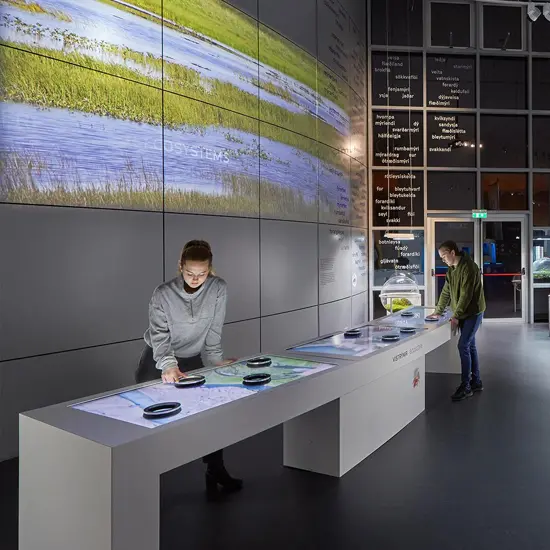
Intelligent audio playback system
There is enormous value in implementing advanced audio technology in art galleries and museums. Creative audio guides add depth to the educational experience through sound-based storytelling. Audio guides can connect works of art and historical artifacts with unique narratives that are sure to captivate visitors. To improve the overall experience, some organizations choose to use audio guides and add translators, archivists, and voice actors. When organizations take the time to tailor content for specific audiences, they can increase engagement for each visitor.
While some visitors prefer to read exhibit details, others may prefer to experience the exhibit with added sound. These acoustically enhanced displays ensure that information is readily available for different learning styles, allowing museums and art galleries to cater to a wide range of visitor groups. This is especially important for museums, as they support a wide range of social programs that may involve children with learning disabilities, people with Alzheimer’s, and people learning English as a second language. In addition, audio technology ensures that even visually impaired visitors have an enjoyable experience.
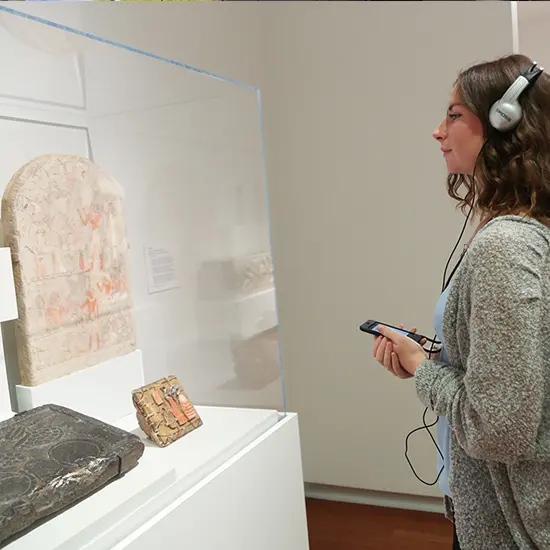
For more than 20 years, GalaxyAV has designed and built many audio-visual system integration projects for many well-known art exhibition halls around the world. We have rich experience and a professional team to achieve the audio-visual integration effect you want. If you have needs for audio-visual integrated equipment and audio-visual integrated project solutions, please contact our senior technical engineers, and we will provide you with free consulting solutions as soon as possible.
Want to know more about the Audio Visual Solutions?
